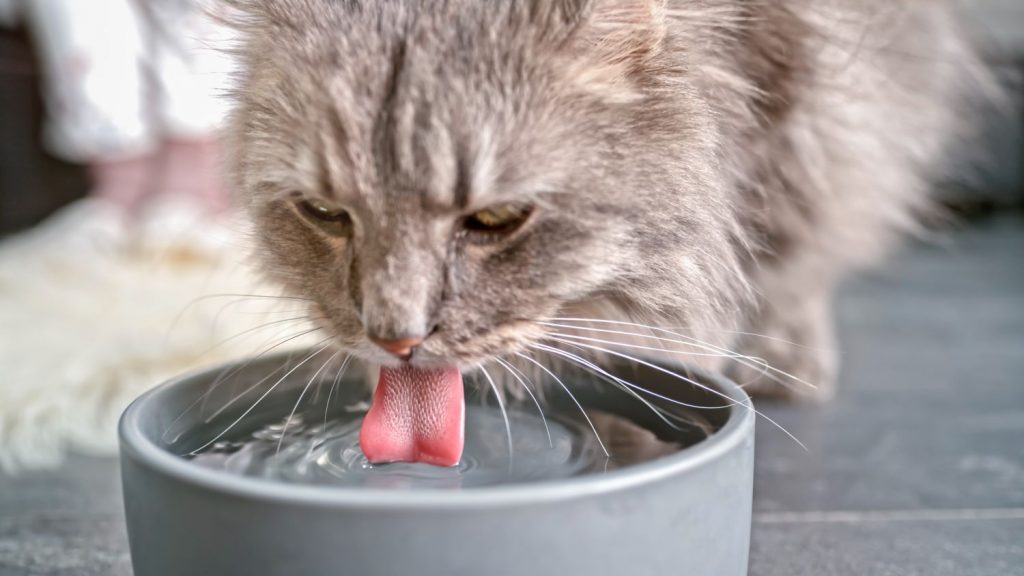
Excess Thirst in Pets (When Is It Too Much?)

Our four-legged friends need lots of water to stay happy and healthy. Especially in the hot summer months or after long walks and vigorous playtime. It can get hot and muggy here in Arlington. Always monitor your pet’s water intake so you have a baseline and can know when something is off.
When water intake goes beyond a normal amount or becomes excessive, it might be time for your pet to be evaluated by a veterinarian.
Excessive thirst in dogs is called “polydipsia,” and can be a sign of underlying health conditions. At Arlington Animal Hospital, we are here to help you understand what is going on so your pet is happy and healthy.
How Much Water Intake Is Normal?
Most dogs need about one ounce of water per pound of body weight. For example, your ten-pound Russell terrier will need at least one cup of fresh clean water daily. She might need more if she’s active or happens to be nursing.
If you notice your dog seems very thirsty after a hot day or lots of play, there is usually no cause for concern. However, take note if you notice frequent excessive drinking with no apparent cause—it can be a sign of illness.
Senior pets who are no longer as active should be monitored closely. Polydipsia is a symptom of many diseases to which older pets may be especially vulnerable.
The most common of these diseases are kidney failure, Cushing’s disease, diabetes mellitus, and urinary tract infections. Pay attention to your pet’s urination patterns. Excessive urination due to increased water intake is the most common symptom of a UTI. Make sure to consult a veterinarian immediately if you notice any signs of blood or cloudy urine.
What to Do If You Think Your Dog’s Thirst is Excessive
First—never, ever limit the availability of water in an attempt to reduce water intake. Attempting to restrict water may result in dehydration and worsen the problem.
Dehydration is very serious and should not be taken lightly. Signs your dog may be dehydrated include rope-like saliva, dry gums and tongue, and sluggishness.
In addition, many medications can have side effects that increase water intake. Always consult a veterinarian to diagnose and examine any potential underlying conditions and or side effects to medicine your dog may be taking.
What to Expect at Your Visit
If your veterinarian believes your dog has polydipsia they will monitor and measure both water consumption and urination output to establish a “normal baseline” of hydration. From there, our team will take labs. We’ll do a blood count (CBC), a urinalysis, and X-ray imaging. These interventions are required to diagnose any issues with the renal system, the adrenal system, and the reproductive systems.
If you suspect your dog is excessively thirsty or want to schedule a dog wellness exam, call us at 703-920-5300- for an appointment. Our staff at Arlington Animal Hospital is here to support you. We will answer any questions and help you best take care of your pet.
Contact Us!
2301 Columbia Pike #G-1, Arlington, VA 22204
Phone: (703) 920-5300
Fax: (703) 685-8860
Email: info@myarlingtonvet.com
Office Hours
-
Monday
8 a.m. – 8 p.m.
-
Tuesday
8 a.m. – 8 p.m.
-
Wednesday
8 a.m. – 6 p.m.
-
Thursday
8 a.m. – 6 p.m.
-
Friday
8 a.m. – 6 p.m.
-
Saturday
8 a.m. – 2 p.m.
-
Sunday
CLOSED
- Doctors’ hours are by appointment only.



